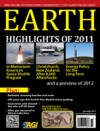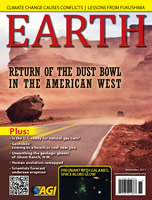 Northern Europe may have gotten stormier since the late Victorian Era. Looking at a fresh analysis of old atmospheric pressure data, researchers found that the annual number of windy days may have risen by one to five days per century in parts of northern Europe, and the intensity of such storms may have grown too. Continue reading Extreme Weather More Frequent in Northern Europe
Northern Europe may have gotten stormier since the late Victorian Era. Looking at a fresh analysis of old atmospheric pressure data, researchers found that the annual number of windy days may have risen by one to five days per century in parts of northern Europe, and the intensity of such storms may have grown too. Continue reading Extreme Weather More Frequent in Northern Europe
Tag Archives: Planetary science
Rumbles in the Alps reveal rockslides
The ricochet of a rock fall resonates in the mind of anyone who has heard it. But it also sets off subterranean waves detectable by far-off seismic stations — and now researchers are using those signals to remotely model rockslides.
Franziska Dammeier, an engineering geologist at the Swiss Federal Institute of Technology in Zurich, and her colleagues linked five metrics of seismic waves to five physical characteristics of rockslides: volume, runout distance (how far the rocks travel), drop height, potential energy and the angle of reach. The researchers reported their model last week in the Journal of Geophysical Research. Continue reading Rumbles in the Alps reveal rockslides
Banded Iron Formations Have Microbial Link?
 A pair of mineral clues recently found in a fossil seafloor may be signs that ancient bacteria helped create banded iron formations — Precambrian-aged sedimentary rocks known for their vibrant, reddish- brown-colored thin layers — that researchers use to reconstruct ancient interactions between the atmosphere, the ocean and the seafloor.
A pair of mineral clues recently found in a fossil seafloor may be signs that ancient bacteria helped create banded iron formations — Precambrian-aged sedimentary rocks known for their vibrant, reddish- brown-colored thin layers — that researchers use to reconstruct ancient interactions between the atmosphere, the ocean and the seafloor.
Modern Tools Reveal World War I Tunneling Tricks
 On the battlefields of the Somme, history and geology meld. Beneath the chalky earth, men carved messages, memorials and poems into the walls of tunnels that were dug almost a century ago during the First World War. Explosions in the tunnels buried countless men and reshaped the surface, where grass and trees now soften the cratered landscape. Many of the soldiers’ bodies — and their words — remain buried. Continue reading Modern Tools Reveal World War I Tunneling Tricks
On the battlefields of the Somme, history and geology meld. Beneath the chalky earth, men carved messages, memorials and poems into the walls of tunnels that were dug almost a century ago during the First World War. Explosions in the tunnels buried countless men and reshaped the surface, where grass and trees now soften the cratered landscape. Many of the soldiers’ bodies — and their words — remain buried. Continue reading Modern Tools Reveal World War I Tunneling Tricks